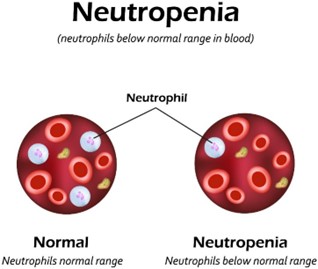A nurse is collecting health history data from a client who has hemorrhoids. Which of the following findings should the nurse expect?
Chronic constipation
Excessive flatulence
Frequent stools
Fecal incontinence
The Correct Answer is A
Chronic constipation is a common finding in clients with hemorrhoids. Constipation can increase pressure on the veins in the rectum and anus, leading to the development of hemorrhoids.
The other options are not correct because:
b) Excessive flatulence is not mentioned as a common finding in clients with hemorrhoids.
c) Frequent stools are not mentioned as a common finding in clients with hemorrhoids.
d) Fecal incontinence is not mentioned as a common finding in clients with hemorrhoids.

Nursing Test Bank
Naxlex Comprehensive Predictor Exams
Related Questions
Correct Answer is C
Explanation
A nurse reinforcing discharge teaching with the guardian of a client who is neutropenic should include the instruction to notify the provider if the child has a fever. A fever can be a sign of infection, which can be serious in a client who is neutropenic.
The other options are not correct.
A client who is neutropenic should avoid crowded places such as stores to reduce their risk of infection. The guardian should inspect the child's mouth daily, not weekly, for ulcers. A client who is neutropenic should avoid fresh fruits as they may carry bacteria that can cause infection.

Correct Answer is D
Explanation
d. Observe the client for 1 hr after meals.
Explanation:
The correct answer is d. Observe the client for 1 hr after meals.
For a client with bulimia nervosa, it is important to closely monitor their behavior after meals to prevent purging behaviors and ensure their safety. Observing the client for 1 hour after meals allows the nurse to provide support, encourage healthy coping strategies, and intervene if necessary to prevent purging episodes.
Option a, administering bupropion 1 hour before meals, is not an appropriate intervention for bulimia nervosa. Bupropion is an antidepressant medication that may be used for certain mood disorders, but it is not the primary treatment for bulimia nervosa.
Option b, allowing the client access to food throughout the day, is not a recommended intervention for a client with bulimia nervosa. Clients with bulimia nervosa often struggle with impulse control and binge eating behaviors. Allowing unrestricted access to food may exacerbate their symptoms and increase the risk of binge-purge cycles.
Option c, weighing the client once weekly, is not the most appropriate intervention for managing bulimia nervosa. While weight monitoring may be a component of treatment, it should not be the sole focus. The treatment for bulimia nervosa involves addressing the underlying psychological and behavioral factors contributing to the disorder.
By recommending the observation of the client for 1 hour after meals, the nurse can provide necessary support, monitor the client for potential purging behaviors, and promote a safe and therapeutic environment for their recovery from bulimia nervosa.

Whether you are a student looking to ace your exams or a practicing nurse seeking to enhance your expertise , our nursing education contents will empower you with the confidence and competence to make a difference in the lives of patients and become a respected leader in the healthcare field.
Visit Naxlex, invest in your future and unlock endless possibilities with our unparalleled nursing education contents today
Report Wrong Answer on the Current Question
Do you disagree with the answer? If yes, what is your expected answer? Explain.
Kindly be descriptive with the issue you are facing.
